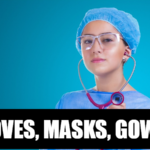Nebulizers, Catheters, Feeding Tubes, Syringes, and Needles: A Comprehensive Guide to Essential Medical Devices
Medical devices play a critical role in the healthcare industry, enabling healthcare professionals to deliver optimal care to patients. Among these devices, nebulaizers, catheters, feeding tubes, syringes, and needles are fundamental tools used for a wide range of procedures, treatments, and monitoring. Whether you are a healthcare professional seeking to expand your knowledge or a hospital owner exploring the top-quality equipment for your facility, this comprehensive guide will shed light on these essential medical devices.
Introduction
In this blog post, we will delve into the world of medical devices and explore the functionality, uses, and importance of nebulaizers, catheters, feeding tubes, syringes, and needles. Each of these devices plays a crucial role in patient care, ensuring accurate diagnostics, efficient drug administration, and overall health management. As we navigate through the topic, we will provide valuable insights, tips, and explanations, catering to both those new to the concept and those familiar with the subject matter.
Nebulizers: Delivering Respiratory Relief with Precision
Definition and Function
A nebulizer is a medical device that converts liquid medication into a fine mist, allowing the patient to inhale the medication directly into their lungs. This form of drug delivery is particularly effective for respiratory conditions such as asthma, chronic obstructive pulmonary disease (COPD), and cystic fibrosis. Nebulizers provide a precise and controlled way to deliver medication to the respiratory system, ensuring that it reaches the deep lung tissue for optimal therapeutic effect.
Types of Nebulizers
There are various types of nebulizers available, including jet nebulizers, ultrasonic nebulizers, and mesh nebulizers. Jet nebulizers use compressed gas to generate a fine mist, while ultrasonic nebulizers employ high-frequency vibrations to create aerosolized medication. Mesh nebulizers use a vibrating mesh membrane to create a consistent and precise mist. Each type of nebulizer has its own advantages and considerations, and healthcare professionals should choose the appropriate device based on individual patient needs and preferences.
Tips for Healthcare Professionals:
- When prescribing a nebulizer, it is crucial to consider the patient’s condition, age, and medical history. Some patients may require smaller or larger nebulizer devices, while others may need additional features such as a facemask for pediatric patients.
- Regular cleaning and maintenance of the nebulizer are essential to ensure optimal medication delivery. Healthcare professionals should educate patients on proper cleaning techniques and emphasize the importance of following the manufacturer’s instructions.
Catheters: Facilitating Fluid Drainage and Monitoring
Definition and Function
Catheters are thin, flexible tubes that are inserted into a patient’s body for various medical purposes. They play a vital role in fluid drainage, measurement, and monitoring. Catheters can be used to drain urine from the bladder, deliver drugs or nutrients directly into the bloodstream, measure blood pressure, and obtain blood samples for testing.
Types of Catheters
There is a wide range of catheters available, each designed for specific purposes. Some commonly used catheters include Foley catheters for urinary drainage, central venous catheters for long-term intravenous treatments, and arterial catheters for continuous blood pressure monitoring. The choice of catheter depends on the patient’s condition, the goals of the procedure, and the healthcare professional’s expertise.
Tips for Healthcare Professionals:
- Proper hand hygiene and a sterile technique are crucial when inserting catheters to prevent infections. Healthcare professionals should follow strict protocols and guidelines to minimize the risk of complications.
- Regular monitoring and assessment of a patient with a catheter are essential to detect any signs of infection, blockage, or other complications.
Feeding Tubes: Ensuring Nutritional Support for Patients
Definition and Function
Feeding tubes, also known as enteral feeding tubes, are medical devices used to provide nutrition or medication directly into the stomach or small intestine. They are crucial for patients who are unable to consume food orally, such as those with gastrointestinal disorders, swallowing difficulties, or prolonged unconsciousness.
Types of Feeding Tubes
There are various types of feeding tubes, including nasogastric tubes, gastrostomy tubes, and jejunostomy tubes. Nasogastric tubes are inserted through the nose and into the stomach, while gastrostomy and jejunostomy tubes are surgically inserted into the stomach or small intestine, respectively. The choice of the feeding tube depends on the patient’s condition, anticipated duration of feeding, and the healthcare professional’s recommendation.
Tips for Healthcare Professionals:
- Proper positioning of the feeding tube is essential to prevent aspiration and ensure effective delivery of nutrition. Healthcare professionals should use radiographic confirmation or pH testing to verify the correct placement of the tube.
- Regular monitoring of the patient’s tolerance to the feeding regimen, as well as evaluating for any signs of infection or tube-related complications, is crucial. Continuous assessment and documentation of the patient’s nutritional status are also necessary for optimal care.
Syringes and Needles: Precision and Accuracy in Medication Administration
Definition and Function
Syringes and needles are essential medical devices used for precise and accurate administration of medications, fluids, or vaccines. They enable healthcare professionals to deliver the proper dosage to the patient and ensure rapid and effective absorption.
Types of Syringes and Needles
Syringes and needles come in various sizes and designs to accommodate different uses and patient populations. The syringe barrel can vary in size, ranging from 1 mL to 60 mL, while needles are available in different lengths and gauges. For subcutaneous injections, shorter and thinner needles are often used, while intramuscular injections may require longer and wider needles. The appropriate choice of syringe and needle combination depends on the medication being administered, the injection site, and the patient’s needs.
Tips for Healthcare Professionals:
- Proper technique is crucial for safe and effective use of syringes and needles. Healthcare professionals should follow aseptic practices, use the correct needle insertion angle, and be mindful of proper disposal methods.
- Educating patients on self-administration techniques may be necessary in some cases. Clear instructions, demonstration, and continuous guidance for patients who require regular at-home injections can enhance their overall experience and compliance.
Conclusion
In this comprehensive guide, we have explored the key features and functions of essential medical devices including nebulaizers, catheters, feeding tubes, syringes, and needles. Each of these devices plays a critical role in patient care, supporting accurate diagnostics, efficient drug delivery, fluid management, and nutritional support. By understanding the various types, applications, and considerations associated with these devices, healthcare professionals and hospital owners can make informed decisions to optimize patient care and safety.
As technology continues to advance, the field of medical devices will undoubtedly evolve as well. Staying up to date with the latest advancements and guidelines in medical device usage will ensure that healthcare professionals are equipped with the knowledge and tools necessary to provide the highest quality care to their patients. Remember, the effective and appropriate use of these devices can significantly impact patient outcomes and contribute to a safer and more comfortable healthcare experience for all.



